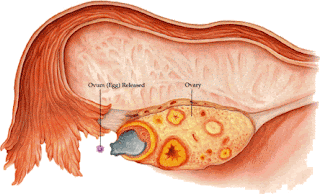This is the
commonest protocol that is used in IVF. The suppressive effects of the initial
injections(buserelin) seem to be beneficial for women with endometriosis
which sometimes can be undiagnosed. Studies have shown that success rates with
Long protocol are marginally better than the short protocol.
The first visit
to the clinic is roughly about a week before the onset of the woman’s menses,
which is usually Day 21 of her menstrual cycle. During this visit, she will
undergo a scan to confirm that she has ovulated. Sometimes, the doctor may give
her some oral contraceptive pills (OCPs) from the beginning of her menstrual
cycle (usually Day 2 or Day 3) and she will commence injections on her own a
few days before the last pill. Yes, if you didn’t know, IVF involves A LOT of
injections. Self-administered injections.
The first type
of injection is called buserelin (Suprefact) and is given as a daily dose in
the morning before she goes about her usual daily activities. These injections
are well tolerated though sometimes she may have hot flushes. She will still
have a menstrual period though it may be lighter or prolonged.
After about 2
weeks of injections, she will be seen in the clinic for a repeat scan to
confirm down regulation (ovaries that are quiet). The dose of busereline is
subsequently reduced and approximately a week later, she will commence on
stimulation of the ovaries. This involves the use of a daily hormonal injection
called FSH (Gonal F or Puregon) for about 10 to 12 days. More injections, yeay!
In total, the
Long protocol takes about 4 weeks plus involving around 50 self-administered
injections. It is not for the faint-hearted.
Are you strong enough to give yourself shots?
Buserelin (Suprefact)
The needle
Lots and lots of needles!
Gonal-F
The Short Protocol
This protocol is
gaining prominence due to its shorter duration and less amount of injections. It
is particularly useful in women with polycystic ovaries, as there is a lower
risk of ovarian hyperstimulation syndrome.
The doctor may
sometimes give several days (up to 3 weeks) of OCPs from the onset of the woman’s
menses. Then on the second or third day of her withdrawal menses after the
pill, she commences the daily FSH injections immediately. A scan would be
repeated on Day 5 of injections after which another injection called GnRH
antagonist (Cetrotide or Orgalutran) is commenced. This injection which is also
done daily prevents premature release of the eggs. In total she will do about
10 to 12 days of injections. Much kinder to the body compared to 50 injections
for the Long protocol.
Gonal-F needle pen

















